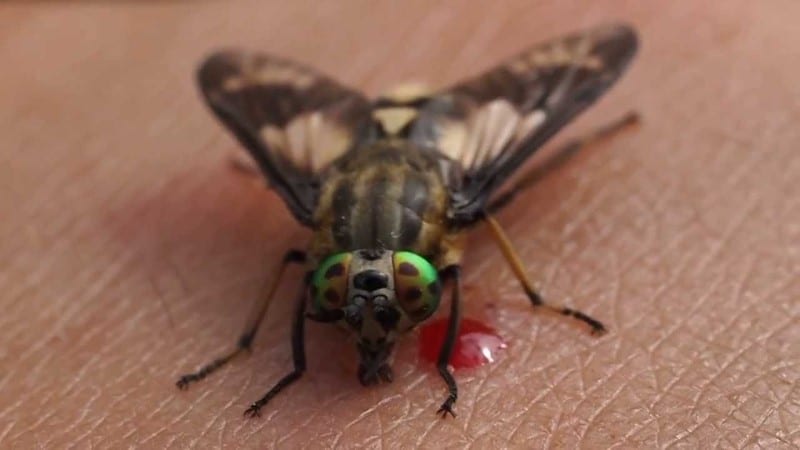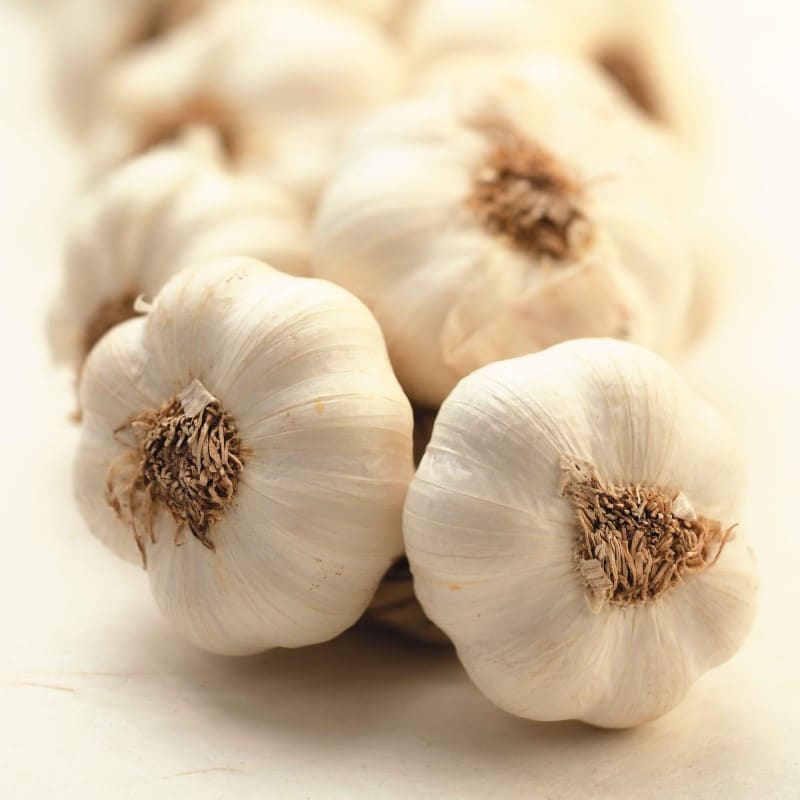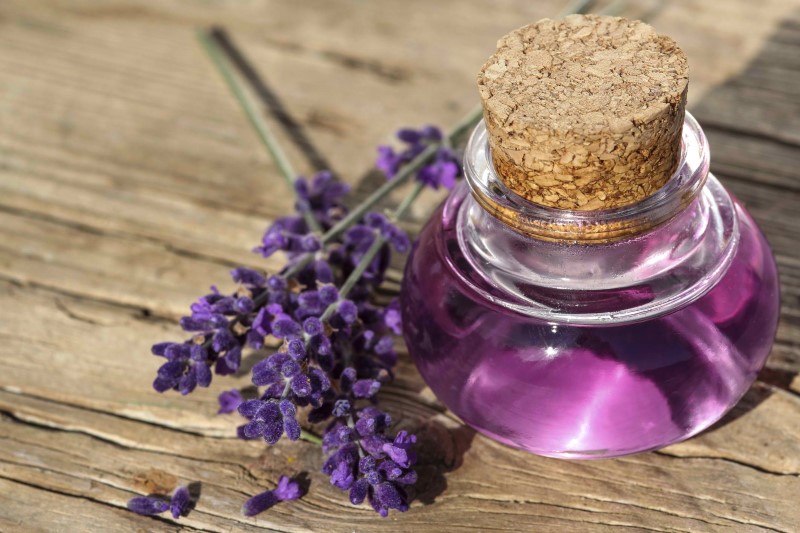After a week of hectic work or study, you deserve a relaxing day at the beach, don’t you think? A beach provides calmness, a place in Nature, and a refuge from all the tension of the real world. As with any environment, the beach presents many new elements you do not see in the urban setting—sun, sea, sand, and of course, the local wildlife.

The beach also has insects such as biting flies. Though it is a given that these insects are there, wouldn’t it be better if you do not become a bite victim at all?
Everything about Biting Flies
Biting flies, also known as sand flies, No-See-Ums, sand gnats, sand fleas, chitras, granny nippers, Marumakshika, biting midges, or punkies, are known for their ability to bite the flesh and suck blood. They are often compared to mosquitoes. Though they are like mosquitoes when it comes to sucking blood, mosquitoes are much better parasites than them. Bite marks of biting flies are bigger than that of mosquitoes. Biting fly bite marks are bumpy and red. In some cases, they itch.

Sand flies are classified under the Family Psychodidae. They are 1.5 millimeters to 5 millimeters long and brownish in coloration. They have hair growth over their legs, abdomen, thorax, and head. The antenna of a sand fly is hairy, long, and beaded. They also have compound eyes. Their wings point upwards forming a vertical “V”. They have short, protruding mouth parts that pierce and suck.
When the breeze is strong and the temperature is cooler, sand flies become inactive. They then rest in dark moist places such as fissures, walls, tree trunks, and cracks.
Sand flies are attracted to carbon dioxide, shiny surfaces, warmth, and moving objects. Other flies are attracted to lighter colors, but biting flies are attracted to dark shades. They travel in swarms. It is highly unlikely that the one sand fly you see is alone. Surely the rest of the swarm is just nearby.
Fortunately, sand flies are not quick to move. If you are kayaking or running during your stay at the beach, they would not be able to keep up with you. Yet, this does not mean that you can just slap and kill them. By the time you are done swatting one fly, another group of sand flies will be all over you and sucking your blood already.
The male of the species does not feed on blood. Both sexes feed on the nectar of plants. The female feeds on blood because they need protein for their eggs and for their reproductive cycles. It is pretty much similar with the way female mosquitoes feed.
To fully understand the sand fly, you must understand its life cycle:
- First, a humid environment is selected. The humidity prevents the sand fly’s eggs from dehydration. Also, the environment should not be cold at all. If the environment’s temperature does become colder than usual the eggs might stop developing and die off. Anticipate the life cycle to happen from twenty to forty days.
- Then, the eggs are laid. The female sand flies deposit 30 -70 eggs at the chosen ideal breeding site, which should be humid and not too cold.
- When all the eggs are laid, it only takes one to two weeks for them to hatch.
- The larvae come out. The sand fly larvae have about 12 segments and a very distinct black colored head. Their body is covered with thick hair. They are also equipped with caudal setae which remains attached to them until they reach their pupal stage. The larvae’s length can range from 1 to 3 millimeters, depending on the temperature and how much the larvae eats.
- The pupa develops from five to ten days.
- After which, the adult come out of the pupae. They usually emerge before dawn.
The Havoc Sand Flies Bring
When a female sand fly bites a human, this is the chance for her to inject the saliva (which has an anti-coagulant). As you well know, human blood can coagulate or clot quickly. This is not good for the female sand fly. If the blood is thick the female sand fly will not be able to suck the blood she needs for her eggs. The saliva truly makes it very easy for the female sand fly to extract as much blood as she needs.

- Sandly Fever Virus
- Chagres Virus
- Oraya Fever
- Red itchy bumpy lesions, which are sometimes painful.
- Punta Toro Virus
- Kala- Azar or Leishmania, which causes a cutaneous sore on your body.
- Toscanca Virus
- Carrison’s disease
Eliminating Sand Flies
Wouldn’t it be great if there were no biting flies on the days you relax ad A barbecue, a hike, an outdoor dinner, a stroll in the afternoon, and even a day at the beach can turn sour whenever the sand flies attack. You and your guests do not have to swat each other, just to continue hanging out under the sun in your garden. Below are some of the ways you can eliminate sand flies effectively:
Indoors:
- You steam clean. Steam cleaning is an effective way to kill adult sand flies, pupae, eggs, and larvae. Sand flies cannot stand extremely high temperatures. When you clean with steam, you use temperatures of up to 1030 degrees, which truly destroys sand flies.
- You vacuum. You should vacuum every corner and nook of your house. Pay more attention to your carpets. Vacuum the cracks on the window panels, walls, ceiling, floors, and other surfaces. Vacuuming kills sand fly eggs and adults.
- Use Lavender Oil Candles and Sprays. Sand gnats are repelled by lavender oil. Spray lavender oil and burn lavender candles to feel sand flies at bay.
- Seal gaps and cracks. Close out any gaps you see on your ceilings, window panels, walls, floors, door panels, and ceiling. Do this before you vacuum. This will prevent sand flies from infesting your home in the future.
- Burn Citronella oil laps and candles. Citronella repels sand gnats. Keep burning citronella oil lamps and candles to keep sand flies away.
- Use DEET-based insect repellent. Clean your house thoroughly first. Then, spray it with DEET-based insect repellent. They are easy to find. You can get them from the nearest store in your area.
- Use eucalyptus candles and oil sprays. Sand flies are also repelled by eucalyptus. Eucalyptus candles and sprays from any store in your area. Spray eucalyptus oil and burn eucalyptus candles to keep sand flies away.
- Use insecticides. Choose insecticides that have linalool and d-limonene. Spray them outside and inside your house. Make certain that you always follow instructions carefully. Keep pets and children outside the house for two hours.
- Use extracts from orange peel. Apply orange peel extracts on doors, windows, terrace, balcony, or any other portals of entry and exit.
- Use citrus juice such as lime or lemon. Spray these citrus juices around the house.
- Other ways. Sprinkle salt on your carpets, a day before you vacuum. Salt is known to dehydrate the sand flies. You should also clean your pets and house clean all the time to prevent further sand fly infestation.

- Sprinkle diatomaceous earth. If your yard or surrounding premises is infested by biting flies, it is ideal to sprinkle diatomaceous earth on moist surfaces such as soil and sand. If it rains, reapply diatomaceous earth.
- Apply some boric acid. Spray boric acid around your infested garbage can.
- Use insecticides. Spray insecticides with linalool and d-limonene. Follow instructions before spraying the insecticide. Keep your pets and children outside the area you have treated, for about two hours.
- Spray citrus juices such as lemon or lime. Spray citrus juices on sand fly infested plants.
- Use Eucalyptus, lavender, and citronella oil sprays. Spray the given aromatic oils on infested areas and plants.
 How to Protect Yourself from Sand Flies at the Beach
How to Protect Yourself from Sand Flies at the Beach
Keep away sand flies when you go to the beach. You should cover yourself well by wearing socks, caps, pants, and long-sleeved shirts. Put on light colored clothes because sand flies are attracted to dark shades. Apply insect repellents that work against biting flies. Here are some of the effective natural repellents you can consider using:
- Garlic. You can rub this on your legs and arms or eat it raw (if you prefer it).
- Coconut oil. Just apply it on your face, hands, legs, and feet.
- Eucalyptus oil. Sprinkle this oil on your cap, clothes, or hat. Do not apply on mucous areas such as your eyes.
- Vinegar. Spray or dab it on your cap, clothes, or hat. Avoid getting it into your mucous areas such as your nose and eyes.
- Avocado oil (with Savlon or Dettol). Apply some on your hat, cap, or clothes.
- The inside of a banana peel. Get a banana peel and apply the inner side of it on your skin.
- Tee Tree oil. Avoid applying this on your mucous areas such as your eyes. You can apply this on your cap, hat, or clothes.
- Lavender oil. Apply it on your clothes, cap, or hat. Do not apply on your eyes, nose, and other mucous areas.
 How Greenheads Can Ruin Any Outdoor Activity
How Greenheads Can Ruin Any Outdoor Activity
Biting flies are seasonal pests. They are also known as greenheads. These biting insects swarm during the summer and bite you even through your clothes. They are more vicious than mosquitoes.
Mosquitoes, as you know, have a thin, delicate proboscis that help them bite their host stealthily. They escape the situation, usually unharmed and full of blood. On the other hand, the greenhead excavates the host’s skin. This is a more aggressive means to acquire what they need, which is blood. It hurts terribly because there is no subtlety at all.
Based on the observation of Peter Bosak (Director of the Cape May County Mosquito Control Department), greenheads have elaborate and unique mouth parts. They slice right through the skin of their host. They do this, so that blood will pool on that excavated part of the skin. The pain is very intense. This does not make them experts in taking human blood. Unfortunately, animals that graze must endure the seemingly unending torment.
Greenheads are called as such because of their huge green eyes. When they get you, they make you flinch more than the other insects. They are always out in search for a blood meal. Like female mosquitoes, female greenheads depend on the protein, present in blood, to produce and nourish their eggs.
These biting flies do not come to you one at a time. They swarm on your skin. Ten greenheads can attack at the same time. Because of this, their bites are more intense. They can even leave baseball size welts on your skin after they bite. This is a constant thing in swamps, but it can also happen at beaches.
Summer time or a warm day at the beach usually brings the dilemma of the sweltering heat. This is an ideal environment for the greenheads. Only some repellents are effective against them. The best way to keep them at bay is to wear long sleeves and long pants. Take note that they can still bite you through very light fabric.
A first biting fly bite can be a startling and upsetting experience if you are not used to it or if you do not even know that they exist. The first bite of a greenhead feels like a pinch. After swatting it and you lift your hand from the bite area, you see a bloody smear. You would have to consider putting ice on the bite site.
